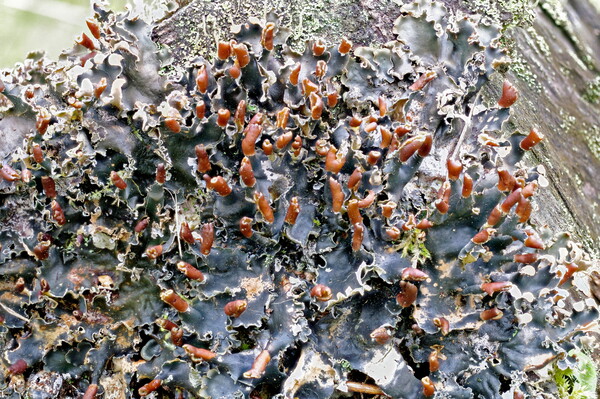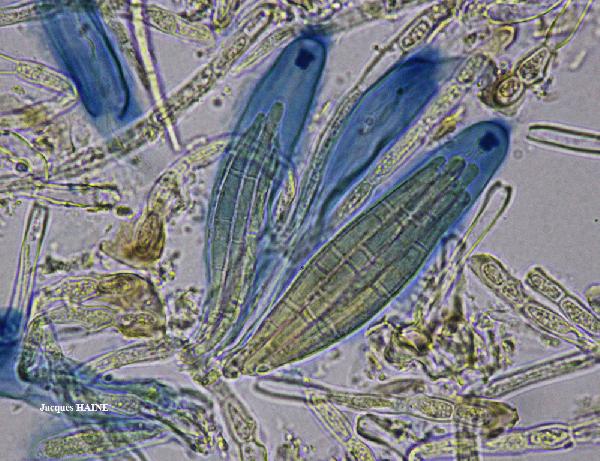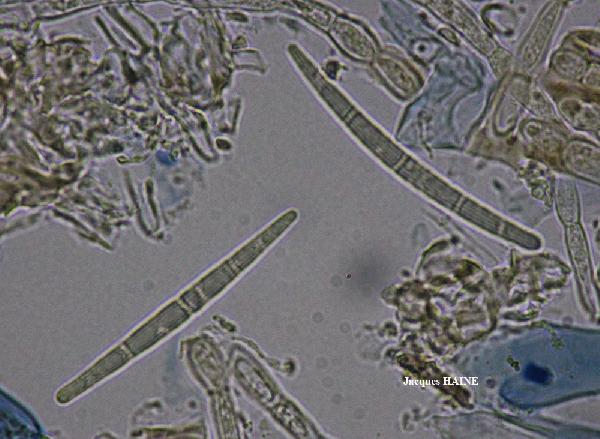Peltigera polydactylon (Neck.) Hoffm.
Descr. Adumbr. Pl. Crypt. Lich., 1: 19, 1790. Basionym: Lichen polydactylon Neck. - Meth. Muscor.: 85, 1771.
Synonyms: Lichen caninus var. polydactylon (Neck.) Lightf.; Peltidea canina var. glabra Ach.; Peltidea polydactylon (Neck.) Ach.; Peltigera canina var. polydactylon (Neck.) Branth & Rostr.; Peltigera polydactylon f. microcarpa (Ach.) Mérat; Peltigera polydactylon f. multilobata Gyeln.; Peltigera polydactylon f. multisecta Gyeln.; Peltigera polydactylon var. microcarpa (Ach.) Schaer.; Peltigera rufescens var. polydactylon (Neck.) Torss.
Distribution: N - VG, Frl (Vitikainen 1994, Tretiach 1996, Tretiach & Hafellner 2000, Tretiach & Molaro 2007), Ven (Vitikainen 1994, Nascimbene & Caniglia 2003c, Nascimbene 2005c, 2008c, 2011, Nascimbene & Marini 2010, Nascimbene & al. 2010b), TAA (Vitikainen 1994, Caniglia & al. 2002, Nascimbene 2005b, 2006c, 2008c, Nascimbene & al. 2005, 2006, 2022), Lomb (Rivellini 1994, Anzi Lich. Ital. 94 and Lich. Sondr. 58: Vitikainen 1994, Gheza & al. 2022), Piem (Vitikainen 1994 Morisi & Sereno 1995, Isocrono & al. 2003, Isocrono & Piervittori 2008), VA (Vitikainen 1994, Borlandelli & al. 1996, Piervittori & Isocrono 1997, 1999, Valcuvia 2000), Emil (Dalle Vedove & al. 2002, Benesperi 2009, Fariselli & al. 2020), Lig (Brunialti & al. 1999). C - Tosc (Benesperi & al. 2007, Benesperi 2011), Marc, Umb (Genovesi & al. 2001, Ravera & al. 2006, Panfili 2007), Laz, Abr (Nimis & Tretiach 1999, Gheza & al. 2021), Mol (Caporale & al. 2008), Sar (Vitikainen 1994 Nöske 2000). S - Camp (Garofalo & al. 1999, 2010, Aprile & al. 2003, 2003b, Catalano & al. 2016), Pugl, Bas (Potenza 2006), Cal (Puntillo 1995, 1996), Si (Ottonello & Romano 1997, Merlo 2004b).
Description: Thallus foliose, broad-lobed, heteromerous and dorsiventral, loosely attached, forming 5-20(-30) cm wide rosettes. Lobes blue-grey to brown when dry, blackish green when wet, contiguous, 1-1.5(-2) cm broad, 4-5(-12) cm long, with ascending, crisped, sometimes phyllidiate margins, the upper surface glabrous, smooth and shiny. Lower surface brownish at margin, darker in central parts, with flat, brown veins and fasciculate, up to 5 mm long rhizines becoming confluent, not arranged in concentric lines. Upper cortex pseudoparenchymatous; medulla white; lower cortex absent. Apothecia frequent, saddle-shaped, on rather long, ascending lobes, with a pale to dark brown disc. Paraphyses simple, distinctly thickened above. Asci 8-spored, fissitunicate, the thickened apex with a K/I+ blue ring, Peltigera-type. Ascospores 3(-5)-septate, hyaline to pale brown at maturity, acicular, thin-walled, (40-)51-66(-73) x 2.5-5.2 µm. Photobiont cyanobacterial (Nostoc, the cells not in long chains). Spot tests: cortex and medulla K-, C-, KC-, P-, or medulla sometimes faintly and fleeting C+ and KC+ pale pink. Chemistry: tenuiorin, methyl gyrophorate, gyrophoric acid, hopanes and unidentified terpenoids.Note: an ecologically wide-ranging species of both mineral and organic, often base-rich soil, and on basal parts of mossy trunks and stumps in open forests; common in the Alps and along the Apennines, with optimum in the montane belt. Most of the old records from Central and Southern Italy (see Nimis 1993: 500) need confirmation, although this species is likely to range through the Apennines to the mountains of Sicily. Some records could refer to other species of the complex.
Growth form: Foliose, broad lobed
Substrata: soil, terricolous mosses, and plant debris
Photobiont: cyanobacteria, filamentous (e.g. Nostoc, Scytonema)
Reproductive strategy: mainly sexual
Commonnes-rarity: (info)
Alpine belt: very rare
Subalpine belt: rare
Oromediterranean belt: absent
Montane belt: rather common
Submediterranean belt: very rare
Padanian area: absent
Humid submediterranean belt: rare
Humid mediterranean belt: absent
Dry mediterranean belt: absent

Predictive model
Herbarium samples
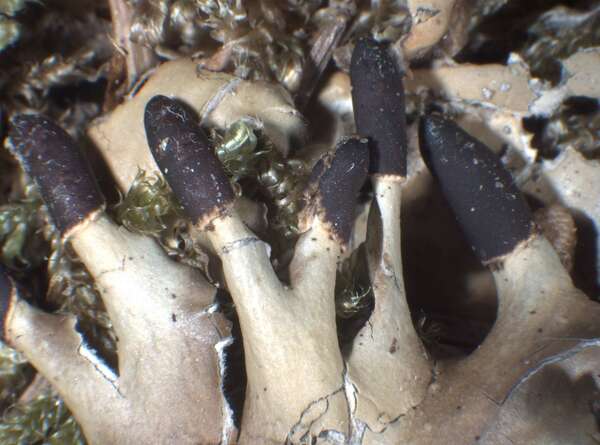

P.L. Nimis; Owner: Department of Life Sciences, University of Trieste
Herbarium: TSB (25193)
2003/03/03
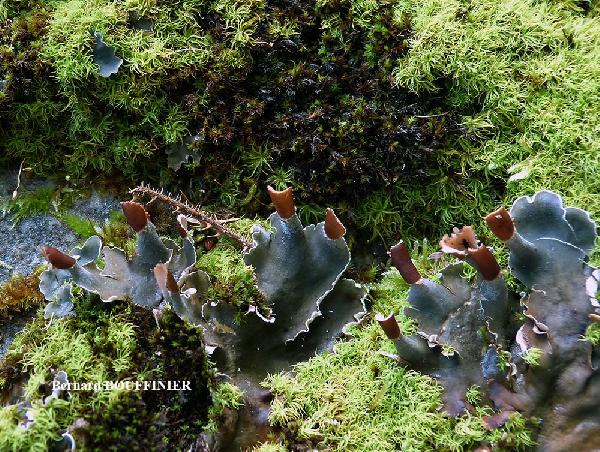
Bernard Bouffinier - Source: http://www.lichensmaritimes.org/index.php?task=fiche&lichen=749&lang=en
France, Barrage du Tech
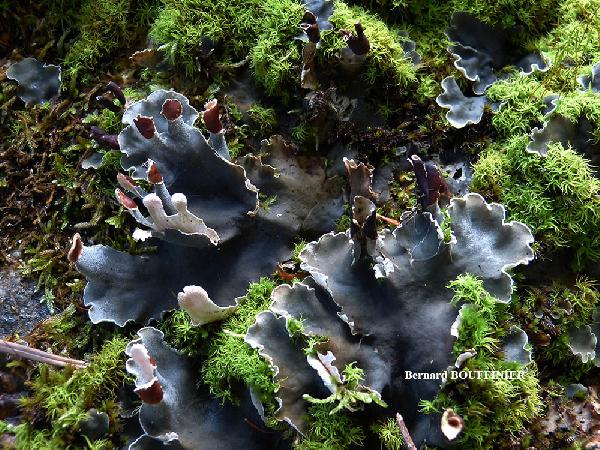
Bernard Bouffinier - Source: http://www.lichensmaritimes.org/index.php?task=fiche&lichen=749&lang=en
France, Barrage du Tech
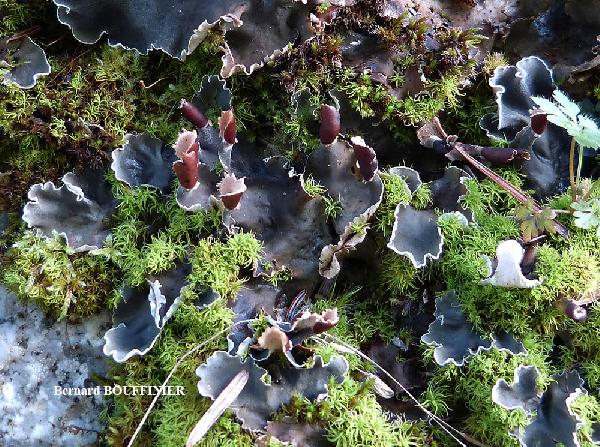
Bernard Bouffinier - Source: http://www.lichensmaritimes.org/index.php?task=fiche&lichen=749&lang=en
France, Barrage du Tech
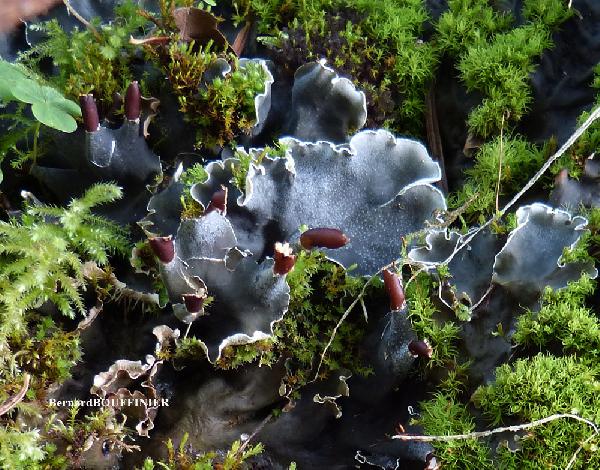
Bernard Bouffinier - Source: http://www.lichensmaritimes.org/index.php?task=fiche&lichen=749&lang=en
France, Barrage du Tech
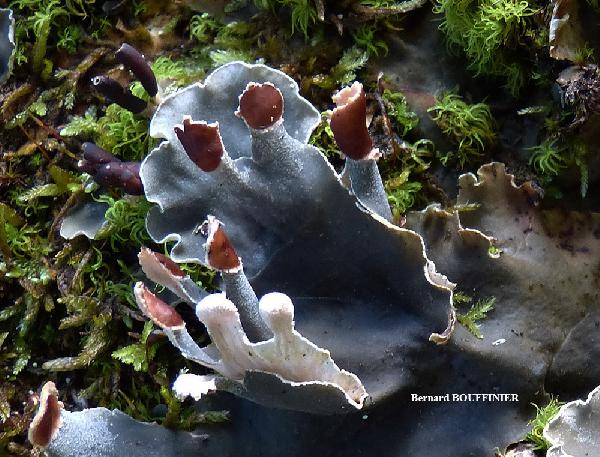
Bernard Bouffinier - Source: http://www.lichensmaritimes.org/index.php?task=fiche&lichen=749&lang=en
France, Barrage du Tech
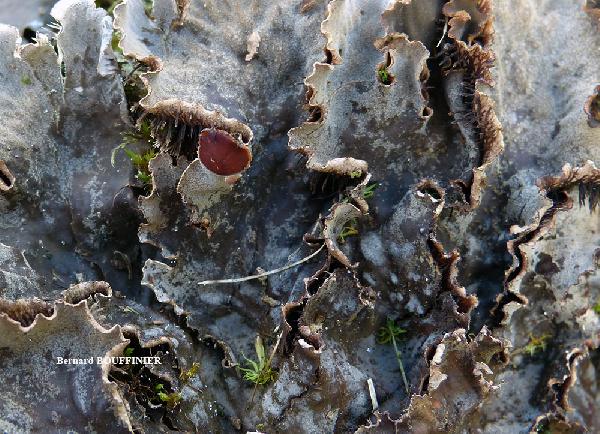
Bernard Bouffinier - Source: http://www.lichensmaritimes.org/index.php?task=fiche&lichen=749&lang=en
France, Barrage du Tech
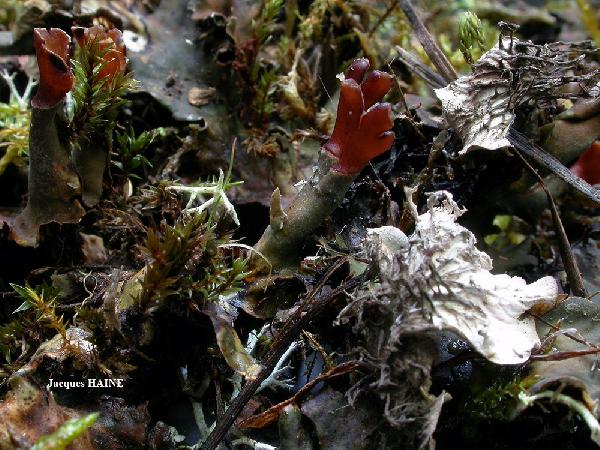
Jacques Haine - Source: http://www.lichensmaritimes.org/index.php?task=fiche&lichen=749&lang=en
France, Ardennes
Growth form: Foliose, broad lobed
Substrata: soil, terricolous mosses, and plant debris
Photobiont: cyanobacteria, filamentous (e.g. Nostoc, Scytonema)
Reproductive strategy: mainly sexual
Commonnes-rarity: (info)
Alpine belt: very rare
Subalpine belt: rare
Oromediterranean belt: absent
Montane belt: rather common
Submediterranean belt: very rare
Padanian area: absent
Humid submediterranean belt: rare
Humid mediterranean belt: absent
Dry mediterranean belt: absent

Predictive model
| Herbarium samples |


P.L. Nimis; Owner: Department of Life Sciences, University of Trieste
Herbarium: TSB (25193)
2003/03/03

Bernard Bouffinier - Source: http://www.lichensmaritimes.org/index.php?task=fiche&lichen=749&lang=en
France, Barrage du Tech

Bernard Bouffinier - Source: http://www.lichensmaritimes.org/index.php?task=fiche&lichen=749&lang=en
France, Barrage du Tech

Bernard Bouffinier - Source: http://www.lichensmaritimes.org/index.php?task=fiche&lichen=749&lang=en
France, Barrage du Tech

Bernard Bouffinier - Source: http://www.lichensmaritimes.org/index.php?task=fiche&lichen=749&lang=en
France, Barrage du Tech

Bernard Bouffinier - Source: http://www.lichensmaritimes.org/index.php?task=fiche&lichen=749&lang=en
France, Barrage du Tech

Bernard Bouffinier - Source: http://www.lichensmaritimes.org/index.php?task=fiche&lichen=749&lang=en
France, Barrage du Tech

 INDEX FUNGORUM
INDEX FUNGORUM
 GBIF
GBIF
 DOLICHENS
DOLICHENS
